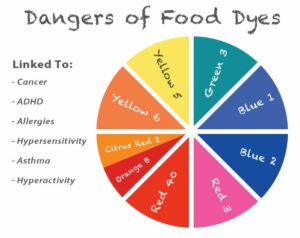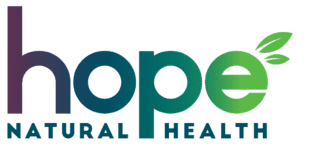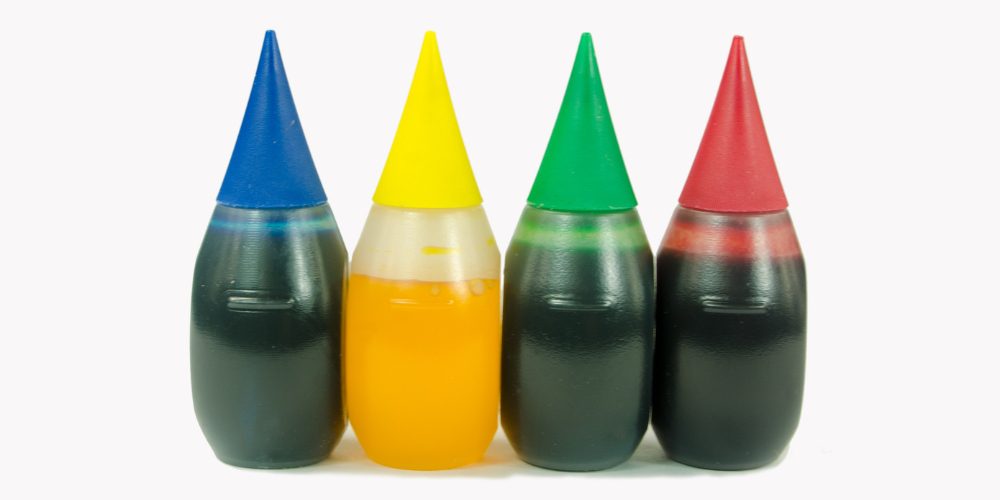We’ve all seen those vibrant, eye-catching colors in our favorite snacks and beverages, but did you know that many of those artificial food colorings are linked to serious health risks? From hormonal disruption to cancer and ADHD, the harmful effects of artificial dyes like RED 40, YELLOW 5, and BLUE 1 & 2 are becoming impossible to ignore. These colorants are commonly found in a wide range of everyday products, including cereals, candies, drinks, cosmetics, and even children’s medications.
We’ll dive into the most common artificial dyes, food dye side effects, their health risks, and how to spot them in your food and personal care products.
Dangers of Food Dyes
While food dyes may make snacks and drinks more visually appealing, many artificial dyes have been linked to health concerns - especially in children. Studies suggest that certain dyes, like Red 40, Yellow 5, and Yellow 6, may contribute to hyperactivity, behavioral changes, and even allergic reactions. Some dyes contain contaminants like benzidine, a known carcinogen, in trace amounts.
Avoiding artificial dyes isn’t just a clean-label trend - it’s a meaningful step toward protecting your health. The first step is learning how to read labels carefully. Let’s uncover the truth behind these dangerous dyes and help you make safer choices for yourself and your family.

RED 40 & RED 3
First up is the big guy, RED 40 or RED 3. It goes by other names, but just remember RED. This one has been specifically labeled as a known carcinogen, linked to infertility and ADHD in kids and is a hormone disruptor. What's alarming is how many products that might be on your shelves it is found in.
Here are some:
- Cereals: Trix, Fruity Pebbles, Fruity Cheerios to name some.
- Condiments: pickled items, some BBQ sauce, cherry pie fillings
- CANDY: Skittles, M&M's, Jelly Beans, Starburts, among others...
- Drugs: Children's Motrin, Flinstones chewable, many many many kids chewables....
- Drinks: Gatorade, Powerade, Kool-Aid and most recently seen for all my fitness girls...BCAA powders, specifically XTEND.
- Cosmetics: eye shadow, lipstick, nail polish...
BLUE 1 & 2
BLUE 1 & 2 also known as Brilliant Blue and Indigo Blue. Sounds like paint colors to me. These 2 dyes have been linked to side effects like gastrointestinal symptoms, ADHD, asthma and allergies. There are MANY skin care products that have these blues in them which we can't ignore because the dyes are now absorbed in through our skin. Here are some products that contain the blues....but the real lesson here is to READ LABELS!
- Cereals: Apple Jacks, Fruity Pebbles, Trix
- Condiments: gum
- CANDY: Jelly beans, Starbursts, Jolly Ranchers, Skittles, Nerds, Gummy Bears...ANYTHING BLUE.
- Drinks: Grape Drinks (Fanta), Hawaiian Punch
- Foods: Pop Tarts
- Skin Care/Cosmetics: there are over 900 cosmetic products that contain this dye. Oh em gee.
YELLOW 5 & 6
Lastly, YELLOW 5 and 6, also known as TARTRAZINE which is derived from coal tar is the 2nd most popular food dye. In Europe, there is a warning label on products that contain this and other artificial dyes. C'mon U.S.! This is another one of the most common dyes and is also a known to cause cancer, cause asthma, cause mutations and decreased sperm count in men. Did you know how many foods contain this yellow color? Here are some:
- Cereals: Lucky Charms, Fruity Pebbles, Trix, Fruity Cheerios
- Condiments: pickles, honey, mustard, gum
- CANDY: jelly beans, Starbursts, Jolly Ranchers, Skittles, Nerds
- Drugs: Children's Motrin
- Drinks: Mountain Dew, Gatorade
- Foods: Mac'n Cheese, Eggos, Pudding Snack Packs, Cheese Nips, Doritos
Shocking information, huhh? Again, READ LABELS! Happy Shopping...DYE FREE!
Want to Learn More About Diet & Nutrition for Hormonal Health?
If you’re concerned about the impact of artificial food dyes or want to discuss how to optimize your diet for better hormonal balance, reach out to me today, and let’s start making safer, healthier choices together!

